TRAVEL
Digital Nomad — when my baby smiles at me I go to Rio de Janeiro
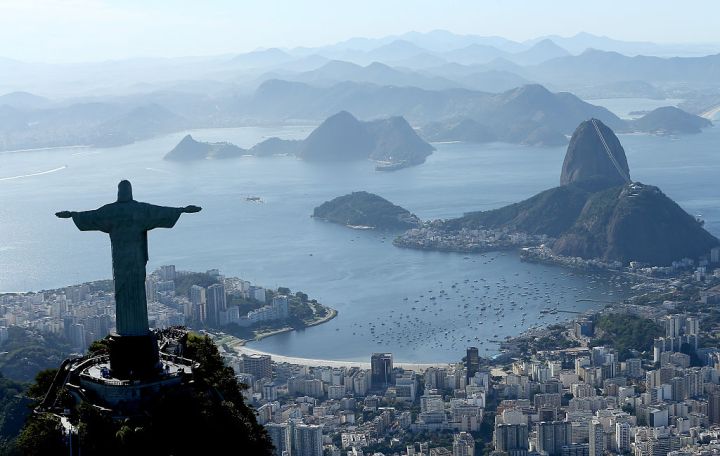
She didn’t actually smile at me, but I went to Rio nevertheless, where I found myself adrift in the megalopolis, possessing the linguistic ability of a two-year-old — no problem, though: they understood me when I called for another caipirinha.
A marquee moon sails out from the scudding clouds, serene and silver. Leaves in the avenue of crumbling mansions shiver in the warm breeze. The darkness is pierced by a beam from a Cyclopean eye as the Dois Irmãos tram hisses and clanks past. Lightning stabs the night and distant peals of thunder are the grumbling of a disgruntled tribe of hungover giants.
Overpinning the thunder is the drumming. It’s blown in by the breeze from all corners of this neo-gothic urban sprawl, from its favelas, streets, clubs, restaurants, bars, beaches and samba schools. It is the heartbeat of the Cidade Maravilhosa — the Marvellous City.
And that heart is beating faster, with more urgency, as Carnival approaches. Carnival, the week-long festival when Rio de Janeiro spreads its wings, unfurls its feathers, parades its finery, sprinkles the streets with glitter and pixie dust and dances till dawn — an exuberant, extravagant, flamboyant celebration of life that has been called the Greatest Show on Earth.

A stilt walker dances in the street during the Bloco das Mulheres Rodadas Carnival parade in Rio de Janeiro, Brazil, on 10 February 2016. The Bloco das Mulheres Rodadas is a feminist street party that takes place during Rio’s Carnival celebrations. (Photo: Nadia Sussman / Bloomberg via Getty Images)
The drumming gets louder as I walk down the hill in the “Bohemian” (dreamcatcher tattoos, guys in tiny lime-green Speedos, women wearing leotards, fishnet stockings and diaphanous capes; art galleries, a bar that sells the coolest Hawaiian shirts on Earth) suburb of Santa Teresa.
Down below, to the left, what appears to be a huge Mayan pyramid rises amid the hulking skyscrapers. It’s the Cathedral of St Sebastian of Rio de Janeiro. Designed by the architect Edgar de Oliveira da Fonseca, the conical, honeycombed building is 75m high with an internal diameter of 96m and can accommodate up to 20,000 people. The cathedral’s four rectilinear stained-glass windows reach a height of 64m.
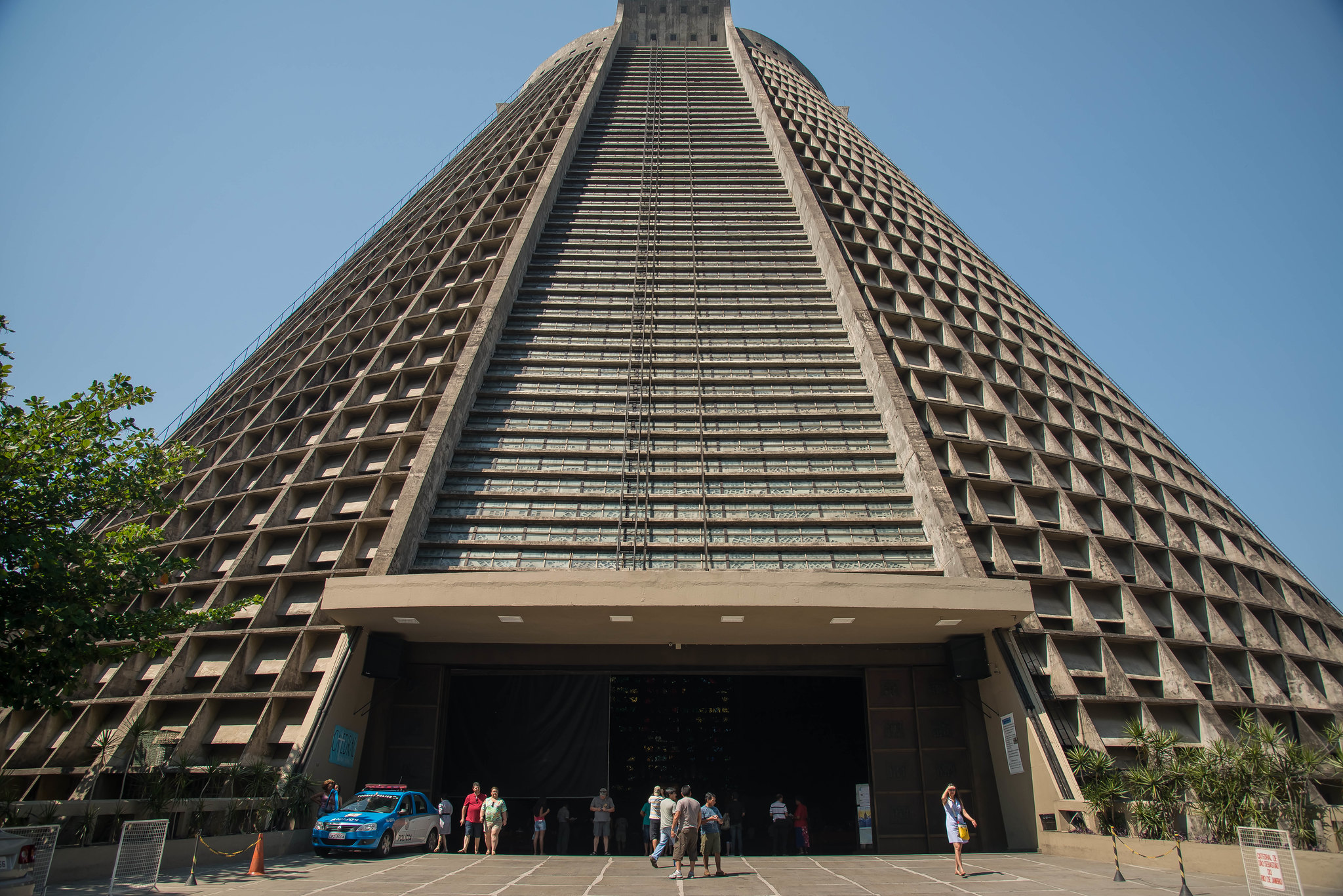
The Cathedral of St Sebastian of Rio de Janeiro. Image: Flickr
Beyond the cathedral looms the tall, art deco clocktower of the Central do Brasil building, the hands of time seizing the present and thrusting it into the past. In the distance, the figure of Christ the Redeemer stands sentinel over the city from atop Mount Corcovado, arms outstretched in benediction, awaiting the End of Days.
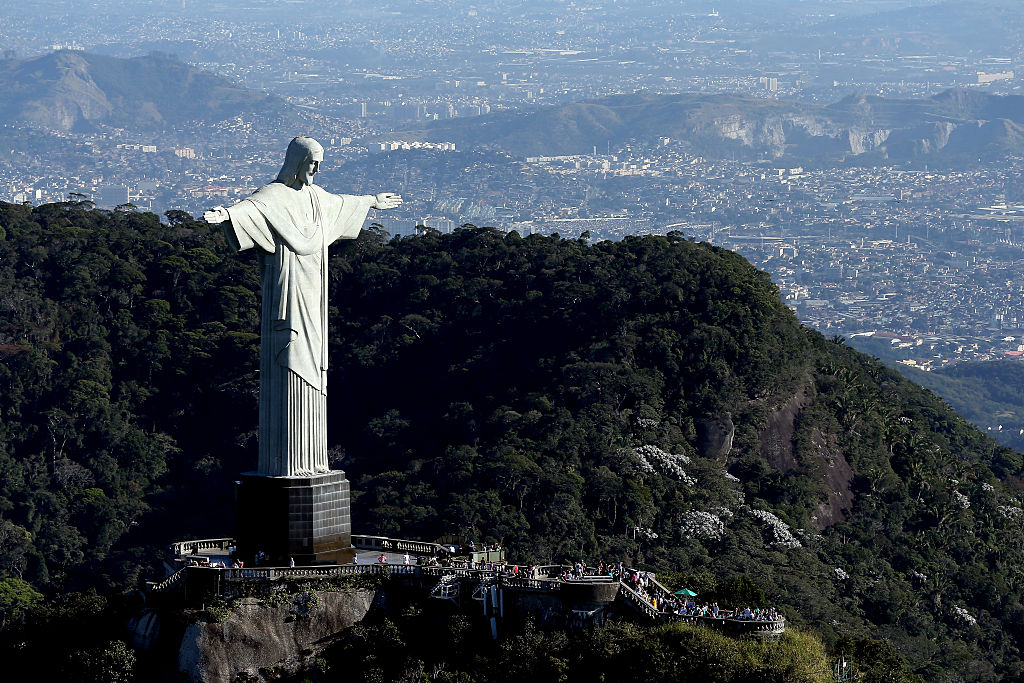
Aerial view of Christ the Redeemer in Rio de Janeiro, Brazil. (Photo: Matthew Stockman / Getty Images)

Christ the Redeemer statue in Rio de Janeiro, Brazil. (Photo: Michael Heiman / Getty Images)
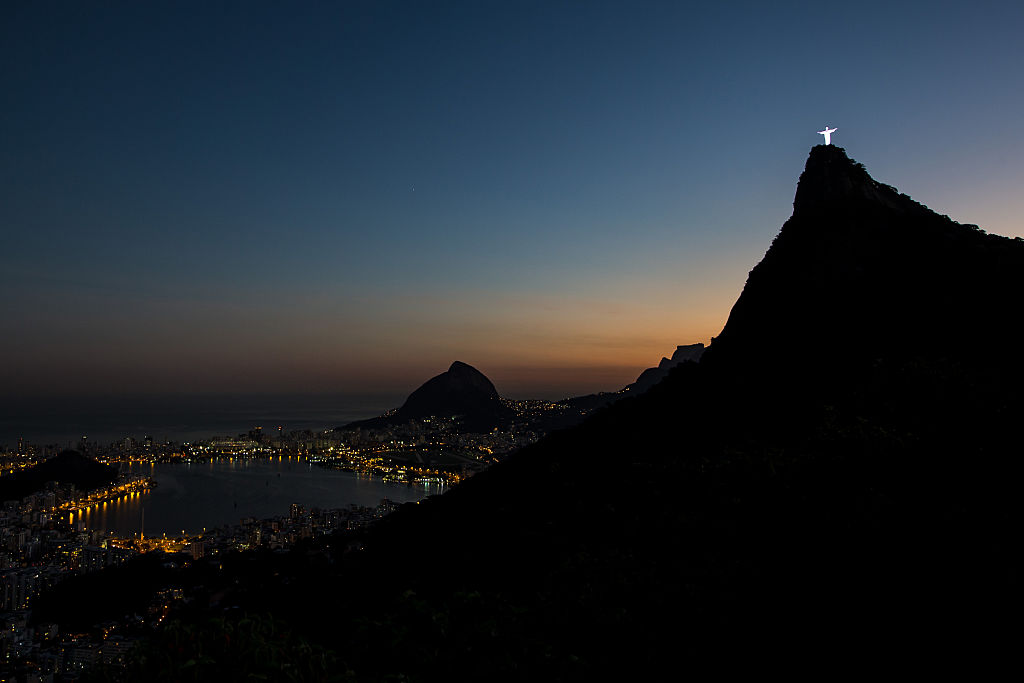
View of Christ the Redeemer and the Rodrigo de Freitas Lagoon during the sunset on 6 July 2016 in Rio de Janeiro, Brazil. (Photo: Buda Mendes / Getty Images)
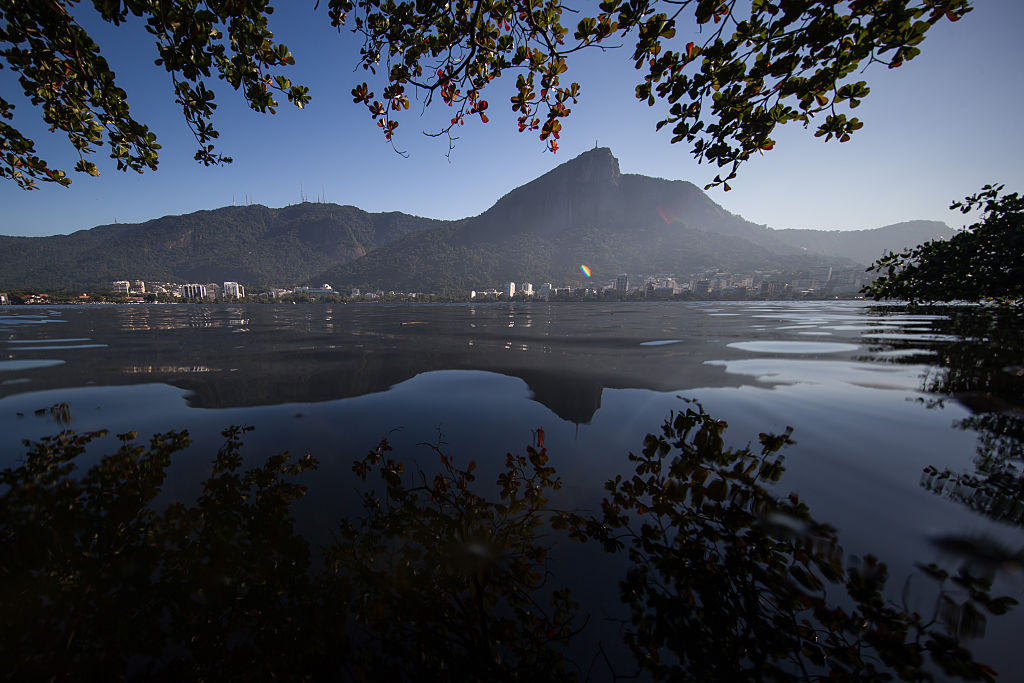
General view of the Rodrigo de Freitas Lagoon with the Christ the Redeemer in the background on 5 July 2016 in Rio de Janeiro, Brazil. (Photo: Buda Mendes / Getty Images)
To the right are the beaches of Ipanema and Copacabana. On my first day in Rio, I strolled along the golden sands of these beaches and saw that girl (yes, the one from Ipanema) — and her dozens of sisters.
The famous song could have been written about any of them.
“Tall”: check. “Tanned”: check. “Young”: check. “Lovely”: check. “When she walks, she’s like a samba that swings so cool and sways so gentle”: check. “When she passes I smile but she doesn’t see”: check.
And trying to strike up a conversation would be futile. My mangled Spanglish (honed to imperfection during three years of digital nomadism in Belize, Guatemala, Nicaragua, Costa Rica, El Salvador, Panama, Colombia, Peru and Ecuador) draws blank stares in Brazil. Portuguese is a different kettle of fish: it’s as if someone has taken all the Spanish words and driven over them with a battered 1972 Kombi, squashing and flattening and elongating them, necessitating a nasal delivery, the use of fricatives, cedillas and various other diacritical marks. The upshot is that here, I have the linguistic abilities of a two-year-old (albeit a two-year-old able to express his desire for a beer or a caipirinha).
On the beach, young men played keepy-uppy football. Telenovela bodies, bronzed and beautiful, reclined under striped umbrellas. Bodies sculpted to perfection in gyms, augmented by surgical procedures, designed to be looked at and admired.
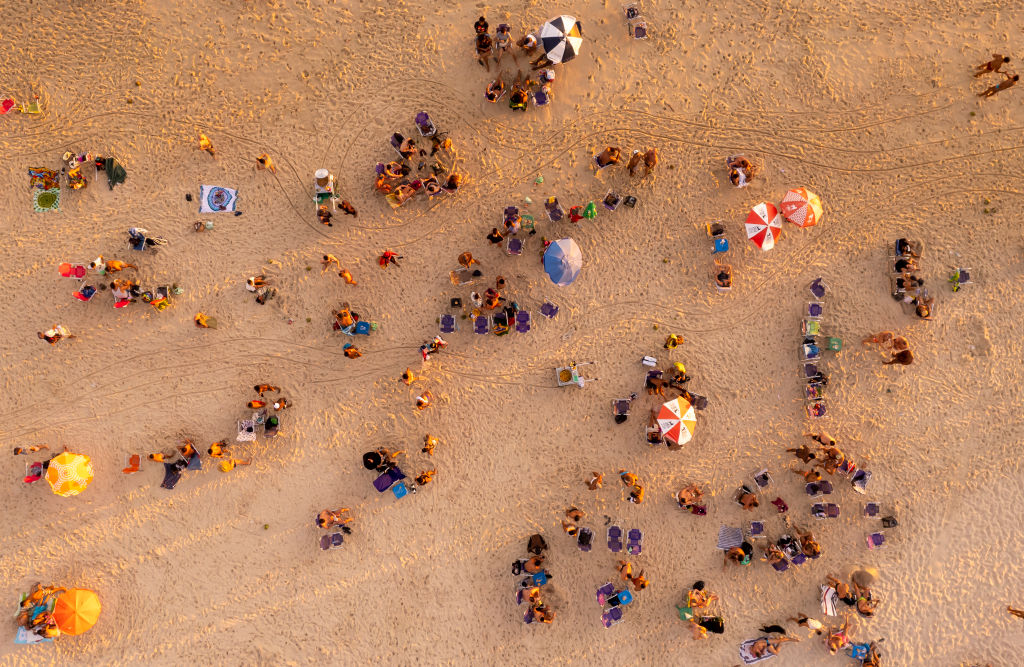
Tourists and locals enjoy the sunset during the summer at the famous Ipanema Beach on 26 January 2023 in Rio de Janeiro, Brazil. (Photo: Buda Mendes / Getty Images)
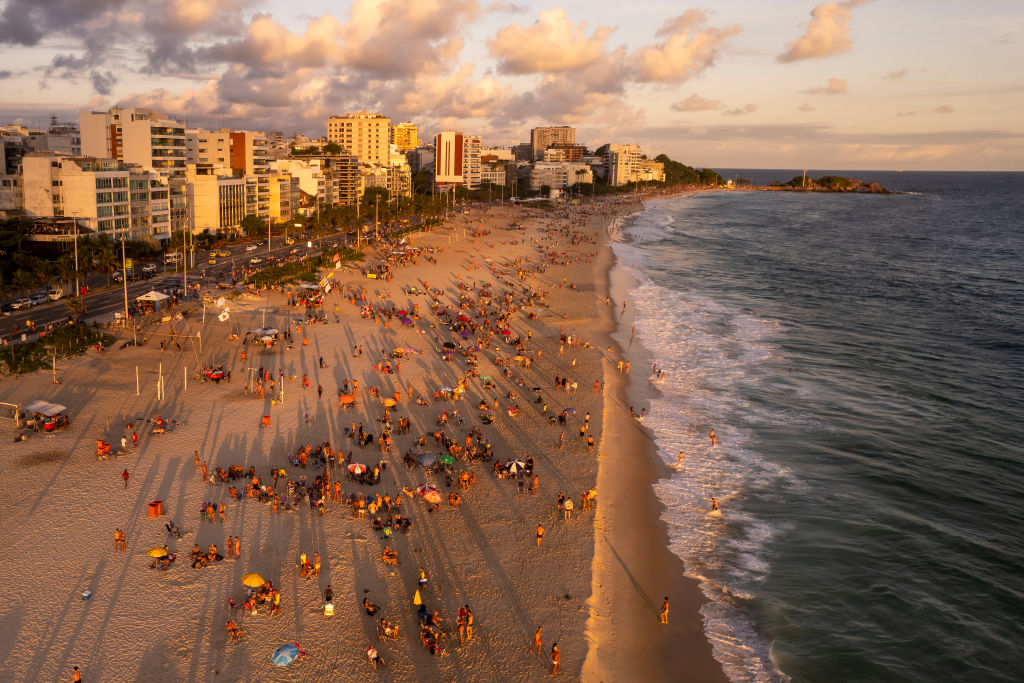
Tourists and locals enjoy the sunset during the summer at the famous Ipanema Beach on 26 January 2023 in Rio de Janeiro, Brazil. (Photo: Buda Mendes / Getty Images)

A person dives into the water at Copacabana Beach on 27 January 2023 in Rio de Janeiro, Brazil. (Photo: Buda Mendes / Getty Images)

A child stands on a paddle board in the waters of Copacabana Beach on 27 January 2023 in Rio de Janeiro, Brazil. (Photo: Buda Mendes / Getty Images)
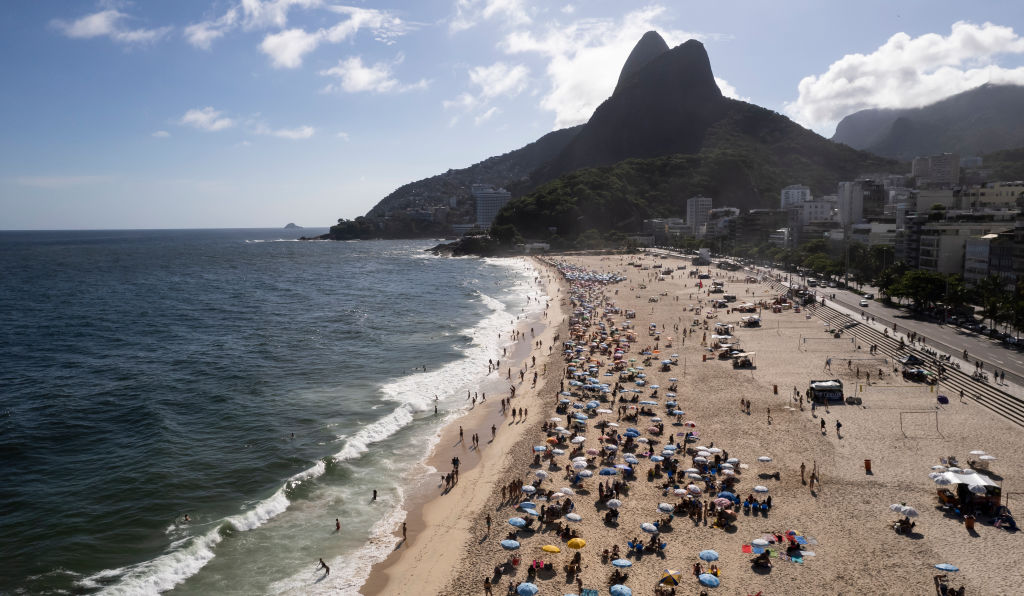
Tourists and locals enjoy the sunset during the summer at famous Ipanema Beach on 26 January 2023 in Rio de Janeiro, Brazil. (Photo: Buda Mendes / Getty Images)
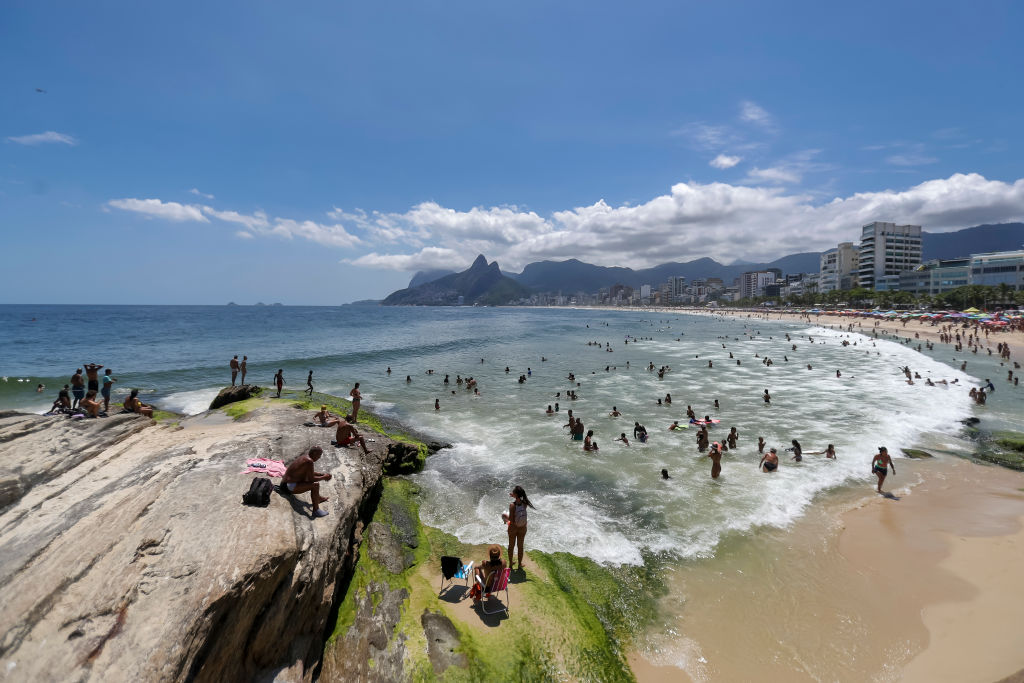
Tourists and Locals Enjoy Summer at Arpoador Beach on 27 January 2023 in Rio de Janeiro, Brazil. (Photo: Buda Mendes / Getty Images)
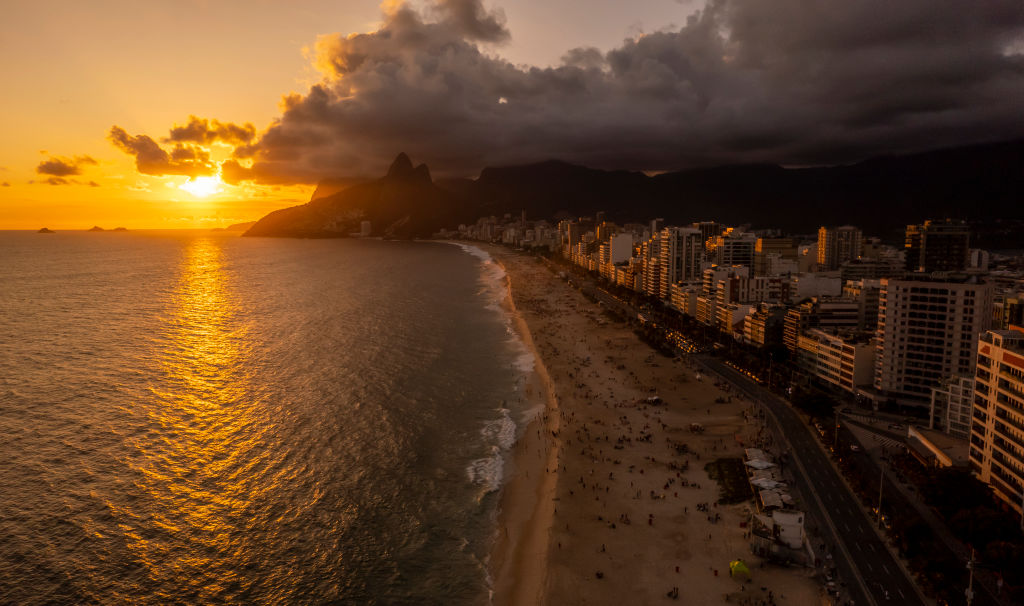
Summer sunset at the famous Ipanema Beach on 26 January 2023 in Rio de Janeiro, Brazil. (Photo: Buda Mendes / Getty Images)
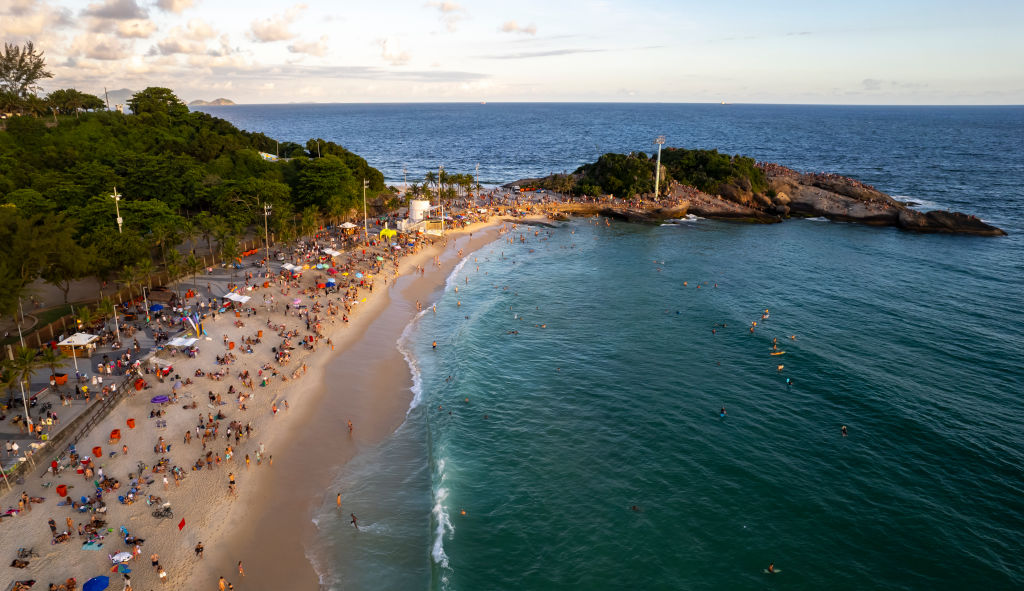
Summer at Arpoador Beach on 26 January 2023 in Rio de Janeiro, Brazil. (Photo: Buda Mendes / Getty Images)

In an aerial view, tourists and locals enjoy the sunset during the summer at the famous Ipanema Beach on 26 January 2023 in Rio de Janeiro, Brazil. (Photo: Buda Mendes / Getty Images)
A couple of streets up from Ipanema, bodies of a different ilk lay on the pavements, snoozing on pieces of cardboard or sprawled on shapeless mattresses. These bodies, scrawny and emaciated, had been shaped by hunger, ravaged by abuse, broken by bad decisions or simply the misfortune of being born on the wrong side of the hill.
In Rio, nearly a quarter of the population, about 1.5 million people, live in favelas — hillside slums crowded with boxy, makeshift buildings piled on top of one another. Despite the fact that Rio has two of the world’s largest urban rainforests, there’s not a hint of green in the favelas — just endless shades of brown.
I stayed in a pousada (guesthouse) in one of these favelas for a couple of days. Favela Cantagalo is perched above Copacabana, and Clara, my landlady, assured me that I was safer in the favela than down below on the patterned, modernist pavements of the beachfront suburb. (The Copacabana promenade was designed by Roberto Burle Marx and the swirling black and white tiled patterns represent the waves of the sea.)
“Just don’t take any photographs,” Clara told me.
The road going into the favela peters out halfway up the hill, and then there’s just a labyrinth of narrow alleys, flights of stairs leading to more alleys and more flights of stairs, a world of shadows — twilight at noon.
Shirtless young men sat on these stairs, some smoking weed, most thumbing through their cellphones, earphones in, heads bobbing to the beats emitted by the magical devices.
Outside a bar on a corner, men and women sat on plastic chairs under an awning, drinking 600ml Brahma beers, watching the world go by, as it does, as it did, as it will. Until it doesn’t.
The bar was on the section of the favela that had a road, and occasionally UPP (Unidade de Polícia Pacificador or Pacifying Police Unit) cops drove past, four to a car, the snouts of assault rifles poking out of the windows. A section of UPP cops was permanently stationed at the bar: lantern-jawed young men in black uniforms with bulletproof vests — and like the other young men in the favela they thumbed incessantly through their cellphones.
The UPP programme, which was implemented in 2008 and combines law enforcement and social services, aims to reclaim territory from the drug-dealing gangs that run the favelas.
The primary gang in Rio is the Comando Vermelho (Red Command), which engages in drug dealing, arms trafficking, armoured car hijackings, kidnappings, loansharking and turf wars against rival gangs. Then there are the Polícia Milícias (Police Militias), comprised of current and former police officers, politicians and military officers. They drive the drug-dealing gangs out of a favela, only to set up their own protection racket.
But none of this was evident during the few days I spent in the favela as an outsider and a tourist, not even scratching the surface of a complex social hierarchy.
And safe I certainly was, which is why, a week later, I was able to walk down the Santa Teresa hill unscathed and ready for whatever Friday night held in store.
The hill took me to the suburb of Lapa, the city’s famous nightclub district, where they dance in the street under the arches of the Carioca Aqueduct, where samba, Carioca funk, bossa nova and tropicália beats pump out from dozens of venues, where the beautiful people queue to get into Rio Scenarium, which hosts the biggest party in Lapa.
I sat down at a tiny bar whose shelves were stacked, floor to ceiling, with hundreds of craft beers. A young woman with the voice of an angel was singing an old Bob Dylan number, Like a Rolling Stone. The chorus — “How does it feel, ah how does it feel?/ To be on your own, with no direction home/ Like a complete unknown, like a rolling stone” — seemed apt for a digital nomad.
I ordered a Lagunitas IPA. It slid down smooth and easy, like the first sip of a good IPA always does. The warm breeze caressed me, the marquee moon glided out once again, and I wished that this moment could last forever… the hands of time frozen at 10.13. DM/ML


















Beautiful. Reminds me that the Rio carnival is on my bucket list and that I need to do something about it. Love your writing.